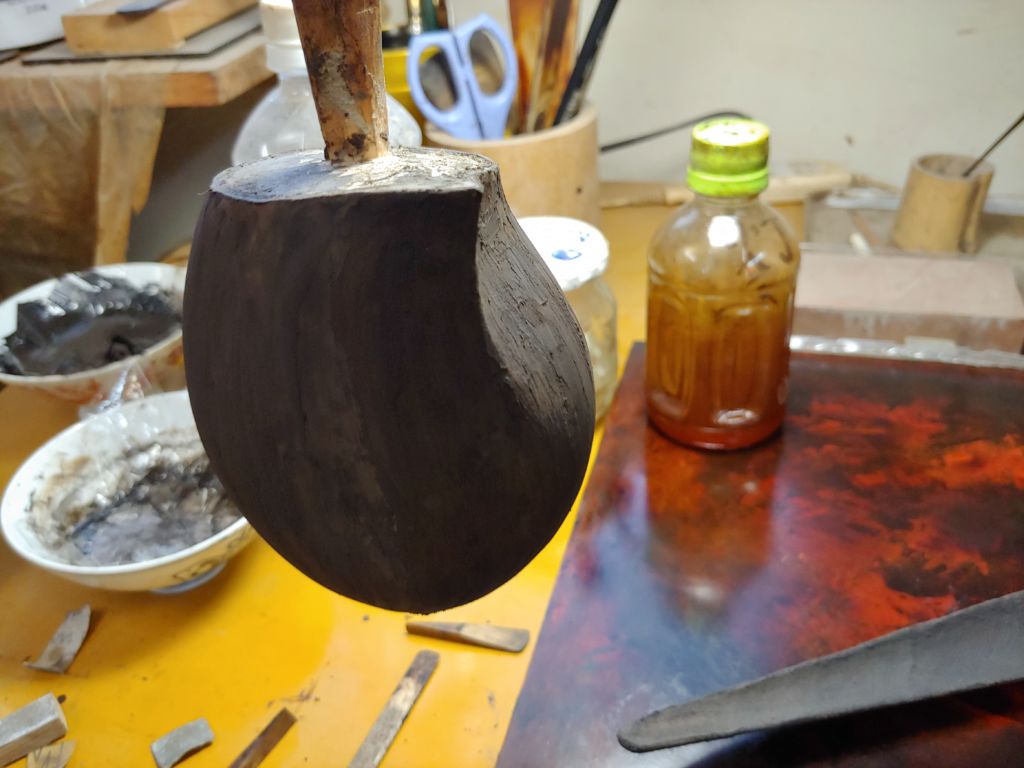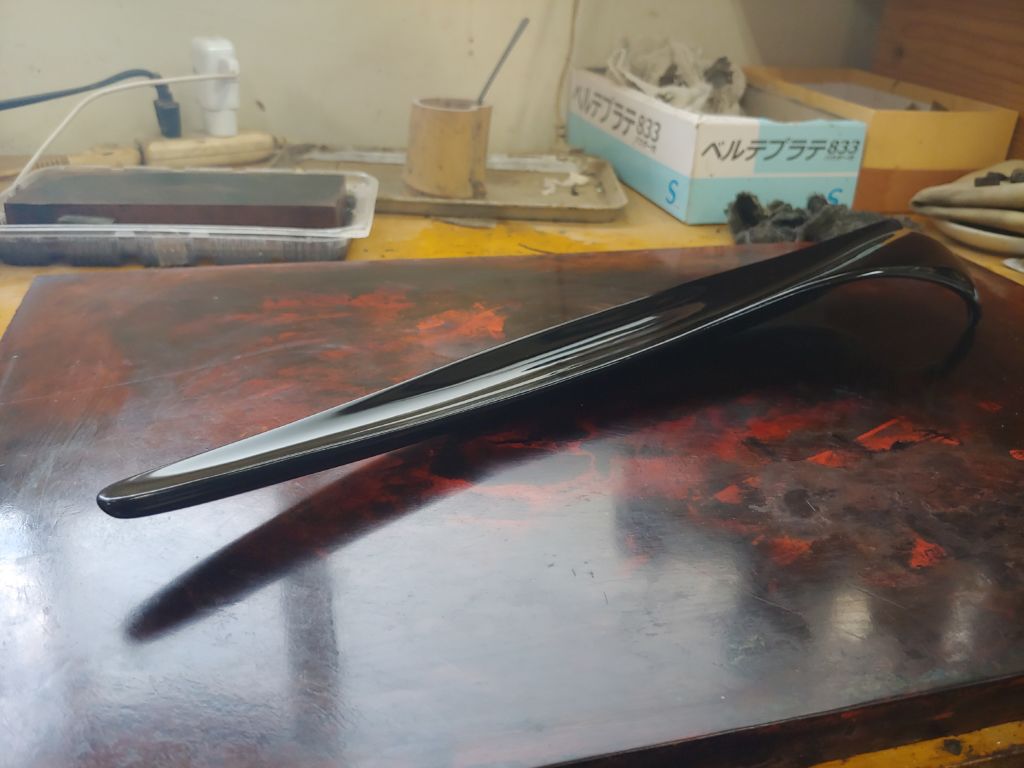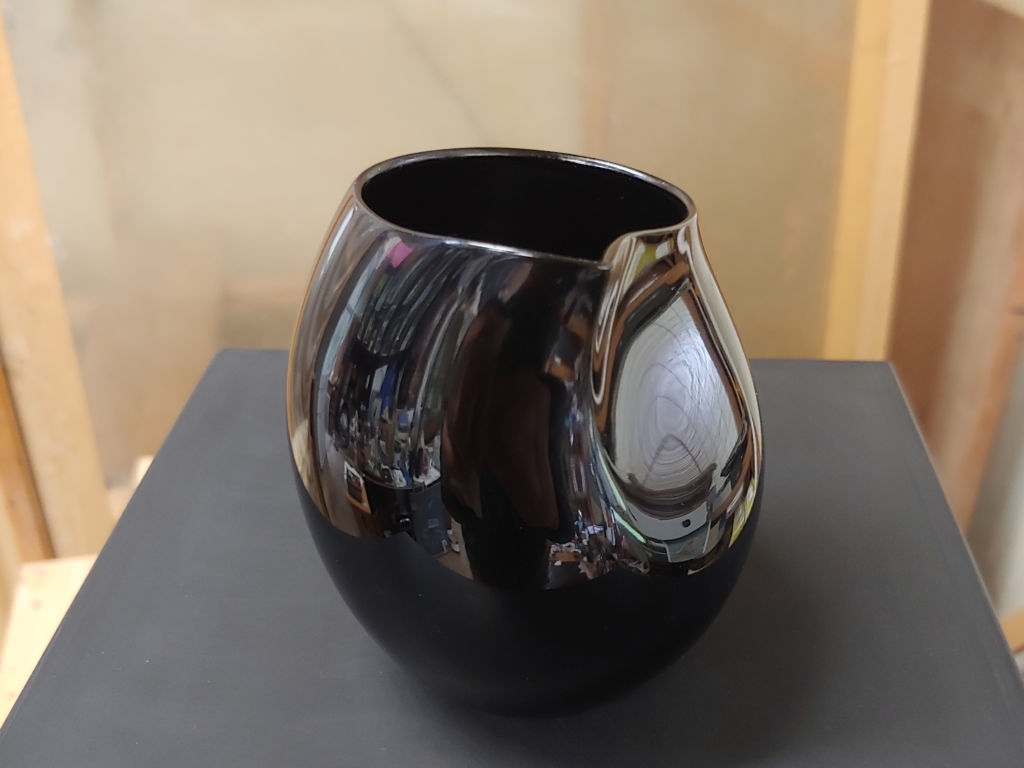„If you look up the word kanshitsu what you will find is dry lacquer technique. I’ve always quite disliked that translation. It makes it sound so uninteresting and, well, rather dry. It hardly, if at all, gives you any sort of indication of what makes the technique so special. A more appropriate translation would be forming technique or infinite possibilities technique. I suppose neither of those rolls off the tongue either, but they at least paint a better picture of what kanshitsu really is.
Kanshitsu is a technique that has actually been around for a very long time. If we take a look back into history, kanshitsu was developed as a way to create lighter weight statues of religious icons so that they would be easier to transport and move. A simple frame, or skeleton, was made from sticks of wood and then covered with clay or mud to create a fairly rudimentary form. Layers of hemp cloth and a paste made from urushi and clay would then be layered over the form until the desired thickness was achieved. Once dry, the form was removed creating a hollow sculpture. The process sharing some similarities to paper mache.
The technique as it is used today has mostly remained unchanged. Mostly because it really hasn’t needed to. The foundation of the technique is fairly simple and therein lies its beauty. Perhaps the biggest difference between then and now are the methods in which the forms are made. With the advent of technology and the modern materials, we have available to us today, forms have greatly evolved and along with them our imaginations. And even yet, there are artists who are discovering ways to create incredible work without the use of any form at all. Of the hundreds of urushi techniques, none seem to have seen as dramatic of a change in the evolution of the work that has been created over time.
It’s not difficult to imagine why Onishi sensei has dedicated his life to the exploration of kanshitsu or why he feels like urushi still has so much more to give to our society. Kanshitsu is almost limitless in its possibilities and it would be too restrictive to only look at it in terms of art. By way of its forming, kanshitsu is naturally lightweight, very strong and dimensionally stable, making it wonderful for everyday items as well. As we have our discussions about urushi and its possible future, sensei often reminds me that art is important, but so are items that we can use and share with others. Urushi is a gift from Earth and is meant for everyone.
Below are a few of my favorite kanshitsu artists today. Their works were particularly inspirational for me as I began my journey with urushi. I hope that this will provide many of you with a starting point for not only kanshitsu, but to explore and want to learn more about the uniqueness of urushi.“
-Written by Hugh Hung
Nagatoshi Onishi – http://www.t-gallery.jp/en/artist/nagatoshi-onishi-en
Shingo Muramoto – https://www.youtube.com/watch?v=M31fYglvxBY&t=
Naoko Kusada – http://www.kanshitsu.com/
Takeshi Igawa – https://www.youtube.com/watch?v=Vgfl_2ltoRw




Hinterlasse einen Kommentar